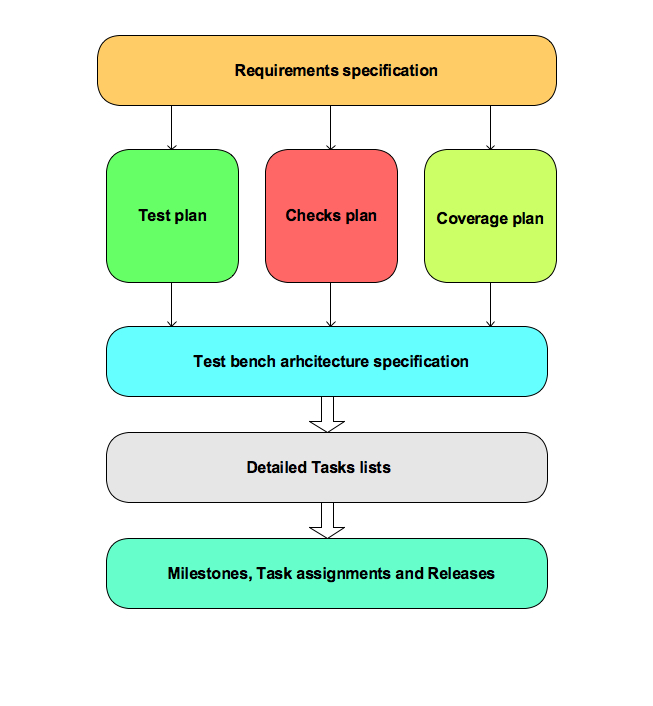Tasks lists, detailed tasks lists are anchors for the development phase. A good tasks lists provides the more accurate forecasts of the development phase schedules.
The criteria to have start listing tasks is to put in place:
- Verification plan consisting of test plan, checks plan and functional coverage plan
- Test bench architecture specification listing the test benches and components of the test bench
With these two documents in hand, its time to build a detailed task lists. Simple benchmark for granularity of tasks should be maximum man days. Maximum man days per task should not exceed 3 man days. Ideal granularity should be task lists of 1 man day. Create as detailed tasks lists as possible. These are as important as the verification plan and architecture. Good detailed task lists is half the job done.
Task lists should contain:
- Each test should be part of the task list. Each test will have to be tracked for written and compiling, all unique variants of the test passing and seeded run for the test variants passing
- Every check coding, infrastructure needed around the check for its implementation and verifying the check working should be part of the tasks lists
- Each functional group coding, compiling, integration and sanity check of the integration should be items in tasks lists
- For each test bench component development or enhancement, tasks with class or algorithm details should be added
- Tool flow, regression flows and any automation requirement tasks should be made part of the tasks lists
- Each task should be given priority and estimated man days
Sum total of all the man days of all tasks would be total minimum duration required. A simple division this total man days with the number of engineers available for the implementation would provide the initial insights into the times lines by which verification project can be completed.
(more…)
